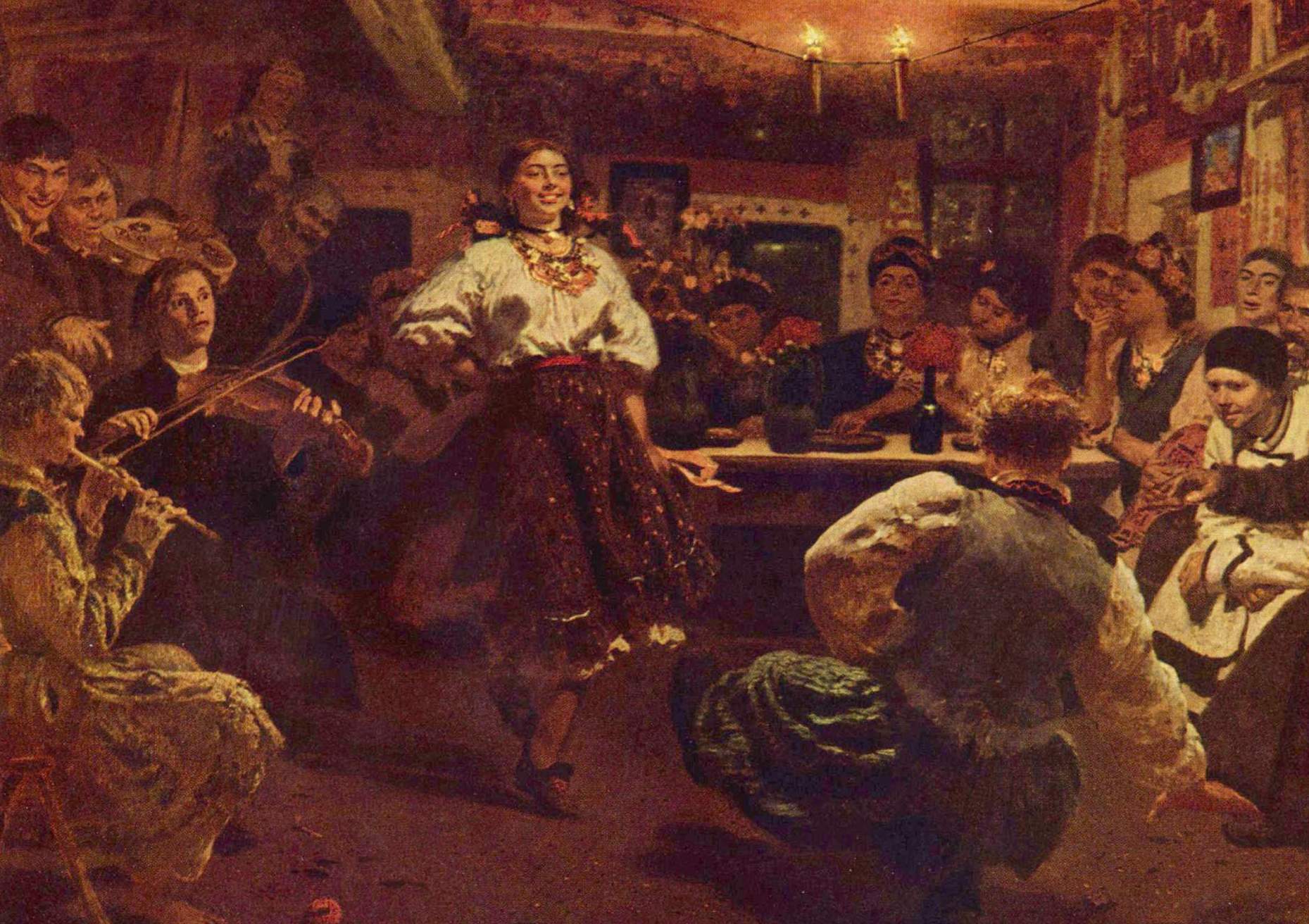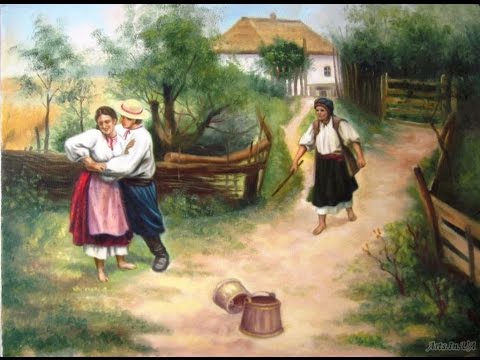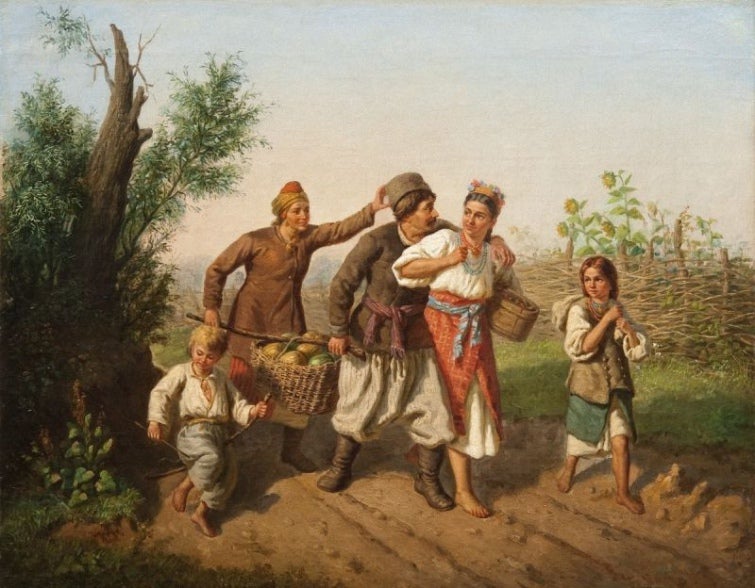“Beats means loves.” This Ukrainian proverb is so deeply rooted in the Ukrainian society, that it is often heard nowadays. But is there still space for it? Where does it come from, after all? In this article we analyze how Ukrainians used to treat domestic violence in past centuries and if they really considered it to be an expression of love.
The perfect scenario
Every nation, culture, social group has its gender system. Oksana Kis, an ethnographer and an author of the book “Woman in traditional Ukrainian culture”, explains that this system entails clearly defined gender roles and a set of life scenarios for them. Since adults live according to these scenarios, they consider those to be the only acceptable and, thus, are inclined to impose them on their children. So, what scenario was considered as the only acceptable one 200-300 years ago?

Creating a family for Ukrainians was, perhaps, the most important task to accomplish. Girls had to get married by the age of 18, boys – by the age of 20. In spite of such a pretty young age for starting a family, youth did not have necessary knowledge about matrimony. Parents were assured that teaching children how to run a household is enough for a happy marriage. In the meanwhile, talking about sexual life and reproductive health remained tabooed.
Youth got their first experience of intimate communication and liking of the opposite sex during so called “vechornytsi”. It was also a place, where males demonstrated psychological dominance, if not physical and sexual violence against girls. “Vechornytsi” was an entertaining night that consisted of talks, jokes, songs and dances, but not only. If a boy and a girl liked each other, they would go to sleep side by side in the same house. This part of “vechornytsi” provided young people with a chance to continue communication and select a partner for future marriage. However, a girl could also be forced to sleep aside a boy that she didn’t like. If she refused, then boys (who would usually form a group in such cases) would take a revenge by smearing her house with tar or taking off her gates. Sometimes they also beat a stubborn girl, which could have tragic outcomes. “This way girls got accustomed to gender-normative behavior, which meant being restrained and compliant in their relationships with males,” Oksana Kis writes.
“Vechornytsi” did not foresee any sexual intercourse. Yet, due to aforementioned compliancy and ignorance about one’s physiology, 4 in 10 women lost their virginity during these traditional gatherings. Sometimes “innocent” plays, initiated by males, ended up with pregnancy. Iryna Ignatenko, an ethnographer and an author of the book “The female body in the traditional culture of Ukrainians”, explains that such incidents had dreadful consequences for a girl. She would either become a single mother, marginalized from society, or would be forced to continue sexual relationship with her offender, threatened that he will reveal her loss of virginity to the community.
Community played a key role in safeguarding “right” life scenarios and punishing women in case of breaking them. The community made sure that everything happens according to the laws of ancestral morality. Thus, a woman had to comply with two mandatory requirements: virginity before getting married and motherhood when married. If she failed to follow any of these two, she risked to become a victim of both psychological and physical violence. A girl, who got pregnant out of wedlock, was titled “pokrytka” and limited from communication with her community. Ukrainians believed that any contact with such a woman leads to misfortune. Volodymyr Gnatuyk, a historian and an ethnographer, found evidence that pregnant out-of-wedlock girls were beat in public with birches, beeches and church bells. “In the meanwhile, attitude towards a male rapist, even if a woman dared to blame him publicly, was at least lenient,” Iryna Ignatenko notes.
According to the “right” life scenario, a young Ukrainian woman had to lose her virginity during a ritual named “komora” (“komora” is a barn in Ukrainian), where the first sexual intercourse of newlyweds took place. Before “komora” female relatives of a groom undressed a bride and meticulously checked her clothes and her hair. They looked for sharp objects, which a girl could use to simulate loss of virginity. Community watched closely, if all rules are followed, and impatiently waited for results of the ritual. If they found out that she was not a virgin, then the community would punish both her and her family. For instance, fellow villagers would put a yoke around their necks and abuse them both verbally and physically. Apart from public humiliation, such a bride often suffered at home from her parents and a groom. These rituals show to what extent collective predominated individual in the Ukrainian society, how little respect communities had towards a female body. Iryna Ignatenko sums up, saying: “Ritual ‘komora’ demonstrates very vividly that the female body did not belong to the woman; nor to her man, but to the man’s lineage!”
Agents of socialization
Community is one of the agents of gender socialization. We can see that in rituals such as “komora” it uses both psychological and physical violence against women. Intimate becomes overt, while in case of breaking the “right” scenario women are punished publicly. In the very same way a village community controlled a process of giving birth. It was believed that only a woman, who gave birth, could be considered as a complete person. Motherhood, as such, “legitimized female body”, Iryna Ignatenko notes. Any violation of this life scenario would inevitably lead to emotional violence and isolation from her community.
Church also had a significant impact on family’s understanding of gender roles. Bible stories could be interpreted in various ways, and only priests had a right to do it. Here is, for instance, an excerpt from the Epistle to the Ephesians: “Each one of you must love his wife as he loves himself, and the wife must respect her husband.” In the Ukrainian version «must respect» was translated as «must be afraid of». Moreover, the first half of this sentence was usually omitted, thus stressing that wives had to remain obedient and dutiful.
Society gave the role of family’s leaders to men. Men had to take care of family’s welfare and, if needed, to arrange a home court. In the laws and customs of different regions of Ukraine we can find provisions that women, in their turn, were supposed to love, respect, cater and be obedient to their husbands, family’s leaders. Historians have also found documents that prove a man’s right to punish his wife physically in case of betrayal, disobedience, laziness or wastefulness.
The very same agents of socialization also tried to limit domestic violence. Yet, rarely with good results. In the Carpathians, for example, a wife could leave her offensive husband or appeal to a court. Punishment for an offender was a fine or a short-term imprisonment. For marital betrayal some communities would punish with fines or public beating. What’s important to note: the latter took place near the church. It was the way for agents of gender socialization to unite their powers.
“Well-grounded” violence
Historian Volodymyr Masliychuk, who studies criminal cases of past centuries, writes that physical violence was ubiquitous in relationships in the XVIII century. Not only between a husband and a wife, but also regarding other relatives and children. For instance, mothers would punish children by hitting them with their own hands or with a duster, a belt or a birch. Oksana Kis proves it with her ethnographic findings. Such methods were believed to be very effective for a good child’s upbringing. Ukrainian folklore displays this belief in such proverbs as: “Love your children, yet hold a stick”, “A child won’t become a person without a stick”.

Newlyweds usually lived by themselves. However, if a wife moved to her husband’s house, probability of violence and mockery from his family members multiplied. Ukrainian folklore tells a lot about, for instance, an evil mother-in-law. Volodymyr Masliychuk found cases, when a mother-in-law did not only beat, but also forced her daughter-in-law to starvation. We all remember “The Kaydash Family”, written by a novelist Ivan Nechuy-Levytsky, who brilliantly exposed reality of that time. “Passionate quarrels between members of the traditional family are described with humour. Yet, in fact, the author reveals a social drama of a household in the patriarchic society,” Oksana Shchur, a curator of the Literary laboratory of Mystetskyi Arsenal, says.
Oksana Kis writes the following about qualities that every Ukrainian wife had to possess: “A woman had to accept the way of life, character and behavior of her husband unconditionally; to develop flexibility, patience and diplomacy in relations with him and his family.” We can thus conclude, that women, who were brave enough to disagree with their husbands, were more inclined to become victims of domestic violence. Volodymyr Masliychuk agrees that gender contradictions were primarily caused by the power of a man over a woman.
“Beats means loves” is not the only proverb, which replicates reality of that time. There are a few more: “Love, as your soul, but shake, as a pear tree”, “A wound from a beloved man does not hurt”, “Hit a woman with a hammer, then she will be golden”, “A woman not beaten is like an axe not sharpened”. Folklore shows domestic violence as a norm, justifies and even encourages it. Concluding from her ethnographic research, Oksana Kis confirms that “everyday ‘well-grounded’ violence against a woman was tolerated by a normative social culture”. In Boykivshchyna, for example, domestic violence was justified with such arguments: “If a woman is good, then you should beat her to remain good, if not good – so that she got better” or “if you don’t beat and don’t yell, then she doesn’t take care of anything”.
What were the main reasons for domestic violence against women? The most widespread, perhaps, was inability to perform household duties. A man could consider it to be laziness, which “should be” eradicated with physical violence. Yet a real reason for “laziness” in the majority of cases was a serious illness. Beating often deteriorated woman’s well-being and could lead to death.
Alcoholism was another widespread cause of domestic violence. Wives would often be scared to express protest at home and silently handled it. On the other hand, though, they took action in other, sometimes radical forms. They could set fire to a “shynok” (a village bar), where their husbands got drunk, or make a revenge to a woman who ran such shynok. Excessive alcohol consumption concerned women as well. Volodymyr Masliychuk found a case when a man killed his wife due to her “alcoholism and wastefulness”.

Violence in school literature
Ukrainian literature of the XIX—XX centuries displayed reality, full of violence. Solomiya Pavlychko, a philosopher and a literary critic, depicted Ukrainian literature as a literature of revenge: “In addition to taking a revenge on oppressors, foreigners and people of a different faith, there was a lot of unreasonable, at a first glance, violence against women. Also, there was hysterical hatred of the carriers of this violence towards themselves.”
We can find confirmation of the cult of revenge and violence in many literary texts, which are mandatory for learning at school. Let’s take, for example, “Testament”, in which Taras Shevchenko invokes to “break your heavy chains and water with the tyrants' blood». Another example is Pavlo Tychyna's poem «The party leads», in which he merrily describes how they will “beat bourgeois”. This poem was mandatory for learning by heart until Ukraine’s independence.
Having a broader look at the context, domestic violence appears to be a mere fragment of a general vibes in the society, its will for massacre and physical punishment. Writers might have used violence to dramatize images, not to call to action. Nevertheless, culture, literature do not only shape a spirit of particular times. As soon as these writings get into the school curriculum, it is quite likely that they might also shape a spirit of the next generations. Solomiya Pavlychko noted that violent texts of the XIX century often had “literary reincarnations in many texts, written in the XX century”, whereas “violence scenes were self-sufficient, deprived of any meaning, but mere cruelty”.
How could one decrease negative impact of literary violence scenes on the youngest readers? Should such writings be removed from the school curriculum? According to Oksana Shchur, removal is not a solution: “Regent of Kievan Rus’ Olga with her revenge to the Drevlians, Marusya Churai, who poisoned Hryts, Shevchenko’s Kateryna, Mavka Lisova, Taras Bulba, gaidamaki – all of these characters are either victims or forced aggressors. We can’t take them all away. Instead, it is vitally important to pay attention to the methodology of teaching literature at school.” We have to teach children to doubt actions and behavior of these characters and cultivate zero tolerance to violence among them. This is the way to “break the cycle” and create new non-violent models of behavior. Oksana Shchur is convinced that only joint work and correct interpretation of literary texts will give results: “Teachers should get materials on latest developments in the fields of tolerance, equality, human rights and freedoms.”
While analyzing relationships in families of previous generations, we could see that physical violence was considered a justified tool. It was used to “put an order” in the division of gender roles. An order was needed to run a household. Nevertheless, times of “Kaydash Family” are far behind. Domestic violence must remain solely on its pages, which we have to interpret wisely to our future generations. In modern Ukrainian families, built on gender equality, there is no space for violence.

